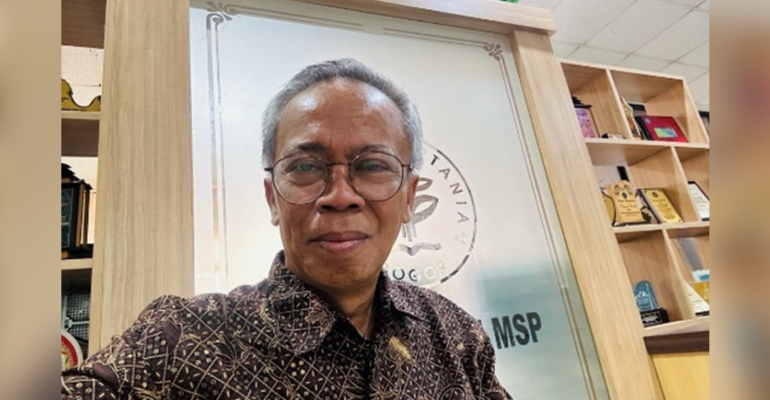Prof Hefni Effendi Involved in FGD on Environmental Assessment Guidelines at KLHK

In order to prepare the obligatory environmental assessment guidelines for business actors and/or activities, the Ministry of Environment and Forestry (KLHK) held a focus group discussion (FGD) on the draft guidelines for preparing environmental assessments.
Professor of IPB University, Prof Hefni Effendi, as one of the drafters of the guidelines, explained the draft guidelines that had accommodated various inputs from previous FGDs in Manado and Pekanbaru.
The previous FGDs had invited relevant stakeholders, such as the business world, the Environmental Agency, several sectors in charge of activities both at the central and regional levels, academics, non-governmental organisations (NGOs), and others.
“There are 14 environmental assessment guidelines being developed which involve cooperation between PDLUK and the Indonesian Environmental Study Centre Cooperation Agency (BKPSL),” said Prof Hefni who is also the Head of the Department of Aquatic Resource Management (MSP), Faculty of Fisheries and Marine Science (FPIK) IPB University.
The activity was organised by the Directorate of Environmental Impact Assessment of Businesses and Activities (PDLUK), Directorate General of Forestry Planning and Environmental Management (PKTL), MoEF.
A number of universities were involved in the collaboration. Among them are IPB University, University of Indonesia, Bandung Institute of Technology, Padjadjaran University, Diponegoro University, Gadjah Mada University, Sepuluh Nopember Institute of Technology, Mulawarman University, Hasanuddin University and Jambi University.
“Each university represented by the Environmental Research Centre (PPLH) under the coordination of BKPSL compiles environmental assessment guidelines, starting from the method of preparing and assessing environmental assessment documents, to environmental assessment guidelines in several sectors that are adjusted to the latest regulations,” explained Prof Hefni.
The regulations in question include Government Regulation No 22 of 2021 concerning the Implementation of Environmental Protection and Management; Minister of Environment and Forestry Regulation (PerMenLHK) No 4 of 2021 concerning List of Business Plans and/or Those Required to Have Environmental Impact Analysis (Amdal), Environmental Management Efforts and Environmental Monitoring Efforts (UKL-UPL); and Environmental Management and Monitoring Affidavit (SPPL), as well as sector regulations that are in charge of activities.
Furthermore, the draft environmental assessment guideline text was commented on by fellow expert teams and by a number of PDLUK staff. Prof Hefni revealed that PDLUK staff provided a lot of input on the purpose and scope of the guidelines. They also emphasised the specificity of the sector being studied, especially in relation to the description of the planned activities and the hypothetical significant impacts that are likely to occur.
“What is emphasised is that this guideline will be used by the activity proponent, the preparation of the environmental assessment and the Feasibility Test Team (TUK). With this guide, it is expected to facilitate and accelerate the preparation of environmental studies,” said Prof Hefni.
In addition, he said, the existence of this guide is intended to reduce the duration of the preparation of environmental assessment documents because it has been directed in the guide. Furthermore, all approved guidelines will be uploaded in a digital-based environmental information system, namely Amdal.net, to be used in the preparation of environmental studies.
“The draft guidelines will continue to be revised through several follow-up meetings, both within BKPSL and with the involvement of relevant stakeholders which will be coordinated by KLHK in the near future,” said Laksmi Widiyajayanti as Director of PDLUK KLHK.
Thus, she hopes that the environmental assessment guidelines prepared have accommodated suggestions and input from many parties, so that they will be able to serve as an efficient and effective national reference. (*/Rz) (IAAS/RUM)



